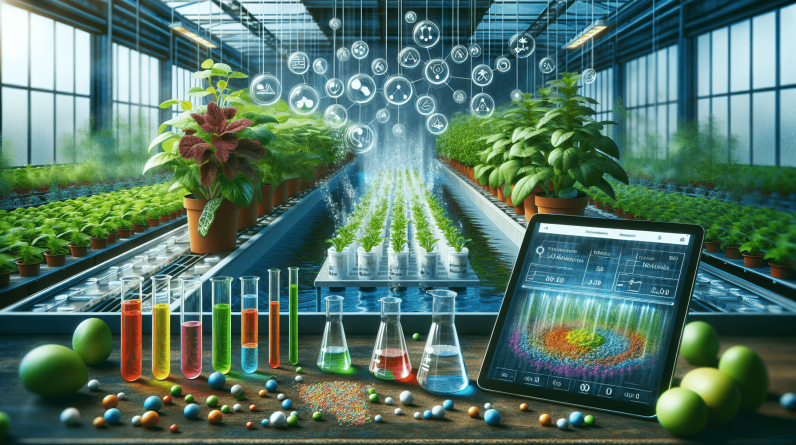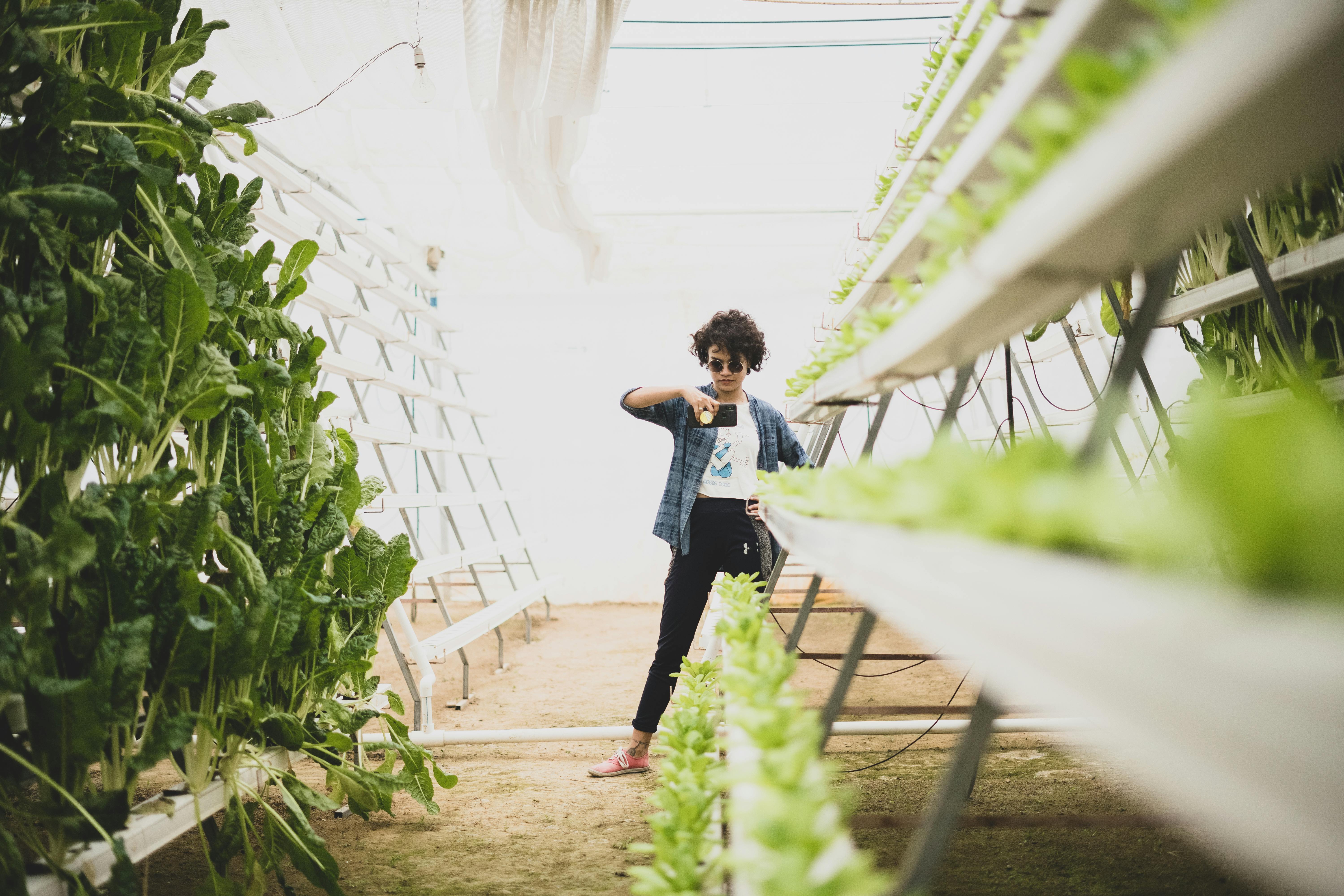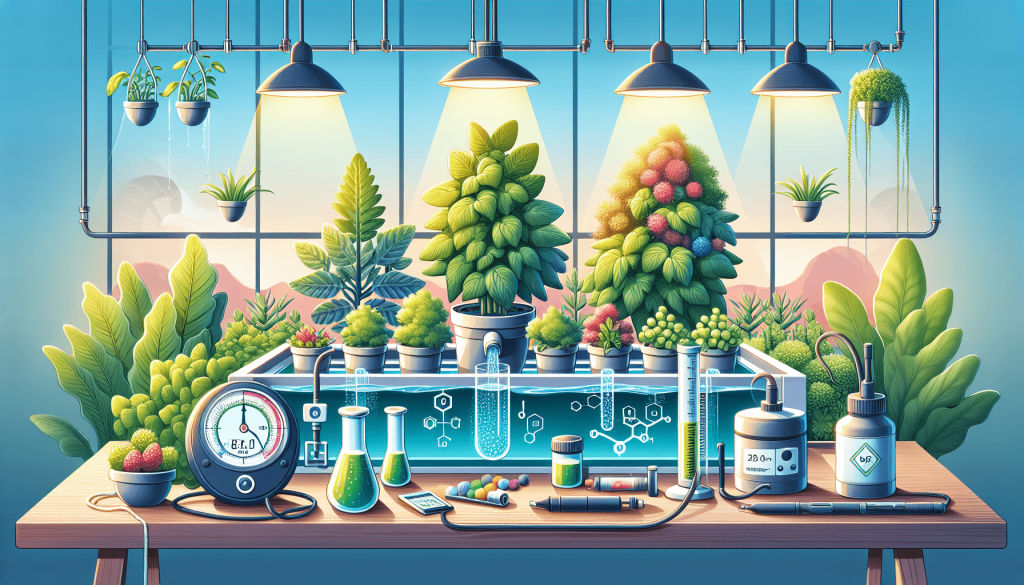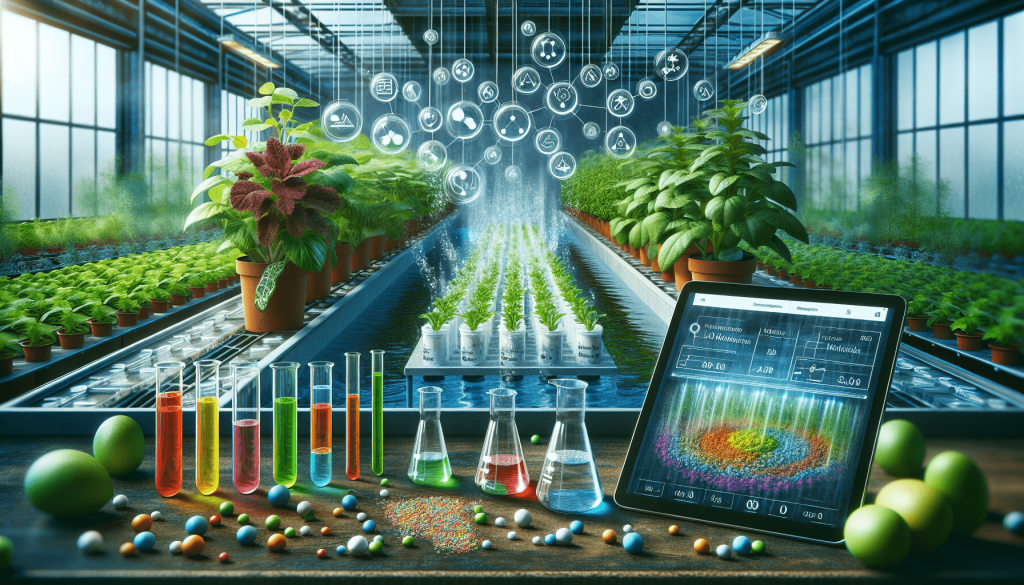
Imagine having a lush, thriving garden all year round, regardless of the season or weather conditions. With hydroponic gardening, this dream becomes a reality. By optimizing the nutrient solution in hydroponics, you can elevate your gardening game to a whole new level. In this article, we will explore the world of hydroponic gardening and the importance of finding the perfect balance of nutrients for your plants. Get ready to unlock the secrets to a bountiful and vibrant garden, all within the comfort of your own home.
Understanding Nutrient Solutions
What are Nutrient Solutions?
Nutrient solutions are carefully formulated mixtures of essential nutrients that provide plants with the necessary elements for healthy growth and development in hydroponic gardening. Unlike traditional soil-based gardening, hydroponics relies on a nutrient-rich solution to deliver essential nutrients directly to the plant’s roots.
Why are Nutrient Solutions Important in Hydroponic Gardening?
In hydroponic gardening, plants do not have access to the natural nutrients found in soil. Therefore, nutrient solutions play a crucial role in providing plants with the necessary elements for optimal growth. These solutions allow gardeners to fine-tune and control the nutrient intake of plants, ensuring they receive all the necessary elements in the right proportions.
Essential Nutrients for Plant Growth
Macronutrients
macronutrients are the primary elements required in larger quantities for plant growth. These include nitrogen (N), phosphorus (P), and potassium (K), often referred to as NPK. Nitrogen is responsible for leaf and stem growth, phosphorus promotes root development and flower production, while potassium strengthens the overall plant structure and enhances resistance to diseases and pests.
Micronutrients
Micronutrients are essential elements that plants require in smaller amounts. These include iron, manganese, zinc, copper, boron, molybdenum, and chlorine. Although needed in small quantities, micronutrients play crucial roles in various metabolic processes, enzyme activation, and chlorophyll production.

Calculating Nutrient Formulations
Determining Plant Requirements
Before creating nutrient formulations, it is essential to determine the specific requirements of the plants being grown. Different plant species and growth stages have varying needs for nutrients. Consulting a nutrient requirement chart or conducting soil and tissue testing can help determine the specific nutrient levels needed for optimal growth.
Understanding Nutrient Ratio
The nutrient ratio refers to the proportion of different elements in the nutrient solution. It is expressed in terms of nitrogen (N), phosphorus (P), and potassium (K) and represented as NPK ratios, such as 20-10-10 or 10-20-10. The ratio can vary based on the plants being grown and specific growth stages. Finding the ideal ratio is essential to provide plants with the right balance of nutrients.
Concentration and Dilution
Once the nutrient ratio is determined, it is crucial to calculate the appropriate concentration of nutrients in the solution. This concentration can be adjusted by diluting the concentrated nutrient solution with water. The strength and concentration of the nutrient solution will depend on the specific nutrient requirements of the plants and the desired growth stage.
Choosing the Right Nutrients
Pre-made Nutrient Solutions
For beginner hydroponic gardeners or those looking for convenience, pre-made nutrient solutions are readily available on the market. These solutions are pre-formulated with the necessary nutrients and can be easily mixed with water. They offer a convenient option but may not provide the flexibility to fine-tune nutrient ratios based on specific plant needs.
Individual Nutrient Components
Advanced gardeners often prefer to create their nutrient solutions using individual nutrient components. This option allows for precise control over nutrient ratios and concentrations. Individual nutrient components can be purchased separately and mixed according to specific plant requirements, providing flexibility and customization.
Organic vs. Synthetic Nutrients
When choosing nutrients for hydroponic gardening, gardeners have the option of selecting organic or synthetic nutrients. Organic nutrients are derived from natural sources and may be more sustainable and environmentally friendly. Synthetic nutrients, on the other hand, are chemically formulated and provide precise control over nutrient levels. The choice between organic and synthetic nutrients depends on personal preferences and objectives in hydroponic gardening.

Maintaining pH Levels in the Nutrient Solution
Importance of pH in Hydroponics
pH plays a critical role in hydroponic gardening as it affects the availability and uptake of nutrients by plants. The nutrient solution’s pH level determines the optimal range for nutrient absorption. Deviations from this range can result in nutrient deficiencies or toxicities, negatively impacting plant health and growth.
Monitoring pH Levels
Regular monitoring of pH levels is vital to ensure the nutrient solution’s pH remains within the appropriate range. pH test kits or digital pH meters can be used to measure the pH of the solution. Testing should be done regularly, preferably daily, to detect any variations and promptly address them.
Adjusting pH with pH Up and pH Down
To adjust pH levels, hydroponic gardeners can use pH Up or pH Down solutions. pH Up solutions, usually based on potassium hydroxide or potassium carbonate, increase the pH of the nutrient solution, while pH Down solutions, often composed of phosphoric acid, citric acid, or nitric acid, lower the pH. By carefully adjusting the pH, gardeners can ensure optimal nutrient absorption and prevent nutrient imbalances.
Optimizing Nutrient Uptake
Root Zone Oxygenation
Proper oxygenation of the root zone is crucial for optimal nutrient uptake. In hydroponic systems, it is essential to ensure that the plant roots have access to oxygen. This can be achieved by using airstones, air pumps, or other methods to aerate the nutrient solution, preventing root suffocation and promoting healthy root growth.
Temperature Control
Maintaining appropriate temperatures in the nutrient solution is vital for efficient nutrient uptake. Most plants prefer a nutrient solution temperature between 65°F and 75°F (18°C to 24°C). Extreme temperatures, either too high or too low, can impede nutrient uptake and negatively impact overall plant health. Using a water chiller or a heater, depending on the specific requirements, can help maintain optimal nutrient solution temperature.
Water Quality
The quality of the water used to prepare the nutrient solution directly affects nutrient availability and uptake. It is essential to use clean, filtered water that is free from contaminants such as chlorine, heavy metals, or excessive minerals. Reverse osmosis or dechlorination methods can be employed to ensure high-quality water for optimal nutrient uptake.

Nutrient Solution Management
Checking Nutrient Solution Strength
Regular monitoring of the nutrient solution strength is crucial to ensure plants receive adequate nutrients. This can be done using electrical conductivity (EC) or total dissolved solids (TDS) meters, which measure the concentration of dissolved nutrients in the solution. These readings can be compared to recommended ranges specific to the plants being grown to determine if adjustments are necessary.
Replacing and Refreshing Nutrient Solution
Over time, the nutrient solution can become depleted of essential nutrients or accumulates excess dissolved solids. It is important to replace the nutrient solution periodically to ensure plants continue to receive adequate nutrition. The frequency of replacement depends on the plants being grown and the rate of nutrient depletion. Additionally, regularly refreshing the solution by replacing a portion of it can help maintain optimal nutrient levels.
Troubleshooting Nutrient Deficiencies
Despite careful planning and management, nutrient deficiencies can occur in hydroponic systems. Common signs of nutrient deficiencies include yellowing leaves, stunted growth, or poor overall plant health. Identifying the specific nutrient lacking and adjusting the nutrient solution accordingly can help address deficiencies. Consulting nutrient deficiency charts or seeking expert advice can guide gardeners in troubleshooting and resolving nutrient deficiencies effectively.
Understanding Nutrient Solution Systems
Static Solution Culture
Static Solution Culture is one of the simplest hydroponic systems where plants are placed directly into a reservoir filled with the nutrient solution. The solution remains stagnant, providing continuous access to nutrients for the plants. This system is easy to set up and maintain, making it suitable for beginners or small-scale gardening.
Continuous Flow Solution Culture
Continuous Flow Solution Culture, also known as the Flood and Drain system, involves periodically flooding the root zone with the nutrient solution and allowing it to drain away. This cyclic process ensures adequate oxygenation for the roots while continuously providing nutrients. This system is popular among hydroponic gardeners due to its efficiency and ability to support large plants.
Aeroponic Systems
In Aeroponic Systems, plants are suspended in the air, and the roots are periodically misted with a nutrient solution. This system relies on a fine mist to deliver nutrients directly to the roots, promoting healthy growth. While highly efficient in nutrient absorption, aeroponic systems require precise management of nutrient solution strength and regular maintenance.
Nutrient Film Technique (NFT)
Nutrient Film Technique (NFT) is a hydroponic system where a thin film of nutrient solution is continuously circulated over the roots, providing a constant supply of nutrients. The excess solution is collected and recirculated, ensuring a continuous flow of nutrients without waterlogging the roots. NFT systems are popular for their efficiency, space-saving design, and suitability for growing herbs, lettuce, and other leafy greens.

Monitoring and Adjusting Nutrient Solution
Electrical Conductivity (EC)
Electrical Conductivity (EC) refers to the ability of a substance to conduct an electrical current. In hydroponics, EC is used as a measurement of the nutrient solution’s strength. EC meters measure the concentration of total dissolved salts in the solution, which correlates to nutrient strength. This measurement helps gardeners ensure that the nutrient solution is within the desired range for optimal plant growth.
Total Dissolved Solids (TDS)
Total Dissolved Solids (TDS) is another measurement of the concentration of dissolved substances in a solution. In hydroponics, TDS meters measure the concentration of dissolved salts, including both nutrients and other substances. Monitoring TDS provides information about the overall concentration and composition of the nutrient solution, helping gardeners make adjustments as needed.
Adjusting Nutrient Solution Strength
To achieve optimal plant growth, hydroponic gardeners may need to adjust the nutrient solution’s strength. This can be done by either increasing or decreasing the concentration of the nutrient mix. Based on regular monitoring and the growth stage of the plants, adjustments can be made to ensure plants receive the necessary nutrients in the appropriate proportions.
Common Nutrient Solution Problems
Nutrient Burn
Nutrient burn occurs when plants are exposed to an excessive concentration of nutrients. This can happen due to over-fertilization or incorrect nutrient solution strength. Symptoms of nutrient burn include leaf tips turning brown, curling, or drying out. To prevent nutrient burn, it is essential to carefully measure and adjust nutrient solution strength according to plant requirements.
Nutrient Lockout
Nutrient lockout happens when plants are unable to absorb certain nutrients due to pH imbalances or interactions between different nutrients. This can lead to nutrient deficiencies, even when the nutrient solution contains adequate amounts of the required nutrients. Regular monitoring of pH levels and adjusting nutrient ratios can help prevent nutrient lockout and ensure optimal nutrient uptake.
Algae Growth
Algae growth is a common problem in hydroponic systems where excessive light exposure and nutrient availability create ideal conditions for algae to thrive. Algae can compete with plants for nutrients, block light, and clog irrigation systems. To prevent algae growth, it is important to minimize light exposure to the nutrient solution, maintain cleanliness, and consider implementing light-blocking measures or using beneficial bacteria to outcompete algae.








